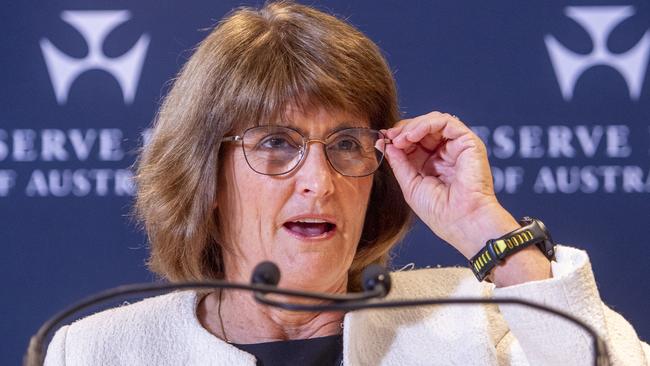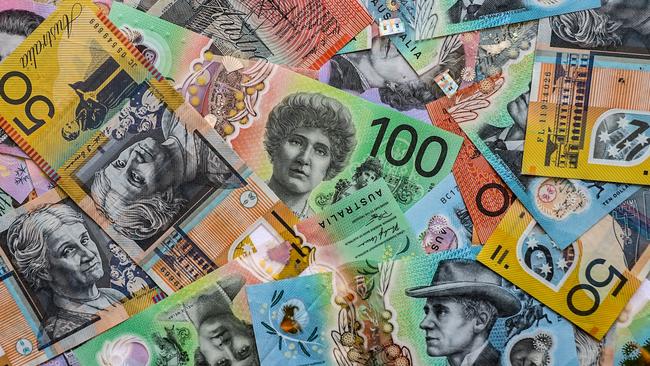Rate cuts won’t be a silver bullet for household budgets, economists predict
Aussie mortgage holders might need to wait nine months to fully feel the impacts of a rate cut, should the Reserve Bank board decide to cut the cash rate on Tuesday.
Interest Rates
Don't miss out on the headlines from Interest Rates. Followed categories will be added to My News.
Consensus has firmed that the Reserve Bank of Australia will begin cutting interest rates this week, but the full impact of these cuts won’t be felt for up to nine months, new research shows.
The cash rate target has been set at 4.35 per cent since November 2023, with experts largely predicting the RBA will cut rates to 4.10 per cent when the board meets on Monday and Tuesday.
If the RBA does finally announce a cut, modelling released by Equifax shows the full positive impact will only be seen in six to nine months.

This means the full impact of the rate cut might not be felt by households and the broader economy until late November.
Equifax executive general manager Moses Samaha said the RBA’s decision must take into consideration the long-term impact on household debt and credit behaviour, as the positive economic effects will not be immediate.
“The RBA will be looking at signs of increasing consumer confidence and encouraging inflation data ahead of their decision next week, but another factor that should be considered is the recovery time for Aussie households,” Mr Samaha said.
Using the example of Canada and NZ, which both raised rates faster than Australia and began cutting rates seven months earlier, shows some improvements in mortgage demand is coming through, but it is taking months to flow through.
“It seems to me that there are other related factors that are impacting consumer and SME confidence,” Mr Samaha said.
“I suspect we won’t see a recovery until just before the end of the calendar year unless the RBA takes a more aggressive stance than other central banks.”
AMP chief economist Shane Oliver agrees, saying it will take six to 12 months before households fully feel the changes from a rate cut.
“As we saw with the rate hikes in 2022 it took a while before the economy actually slowed down,” Dr Oliver said.
“There often is a bit of a lag because it’s only one cut and usually takes a few moves before people start to take it seriously.
“It can take a while for banks to fully pass on the cuts to customers and it also takes a while for homeowners to realise their bank account is looking better than prior to the cut.”
Dr Oliver said while it would provide a bit of confidence to the property market, it usually took a few cuts before it had a noticeable impact on the economy.

The call from the two economists comes as the money market widely expects the rate cutting cycle to start in the coming week
Commonwealth Bank chief executive Matt Comyn said his bank – Australia’s biggest home lender – was ‘acutely aware’ customers expected interest rates to be passed on in full.
“I can’t announce what we might do next week, other than to say we’re, of course, acutely aware of how much our customers would be looking forward to rate relief,” he told the ABC.
If the rate cuts come in February, data from Canstar shows the average Aussie who has a $666,000 mortgage at 6.24 per cent and 30 years to go would save $107 a month.
At the start of the week the money markets had priced in a 93 per cent chance of a rate cut in February, although this figure fluctuated as the markets began to factor in the impacts of US President Donald Trump’s steel and aluminium tariffs.
Under a new proposal, President Trump will implement a 25 per cent steel and aluminium tariffs on all imports to theoretically make American businesses more competitive, although it remains to be seen if Australia will be exempt from this tariff.
BDO partner, economics Anders Magnusson said markets like certainty, with Trump’s surprise tariffs creating another risk for the RBA to consider.
“While Australia hangs in limbo on securing an exemption in Australian imports from President Trump, the ripple effect of tariffs elsewhere will hit the Australian economy, nevertheless,” Mr Magnusson said.
“The uncertainties of a global tariff war may delay the RBA to hold its first rate cut for longer.”
Despite the uncertainty, money markets are still factoring in a 90 per cent chance of a rate cut in February, down from 93 per cent earlier in the week.
Independent economist Saul Eslake said the Trump tariffs are unlikely to stop the RBA from cutting rates in February, calling for three cuts by August, although he acknowledged the mixed signals it was having on the Australian dollar.
“The standard response is the country that imposes tariffs, currency goes up, while the foreign countries currencies go down,” he said.
“Until three weeks ago this was standard practice, but what is interesting is in the last three weeks, since imposing tariffs, the US dollar has fallen.”
Originally published as Rate cuts won’t be a silver bullet for household budgets, economists predict



